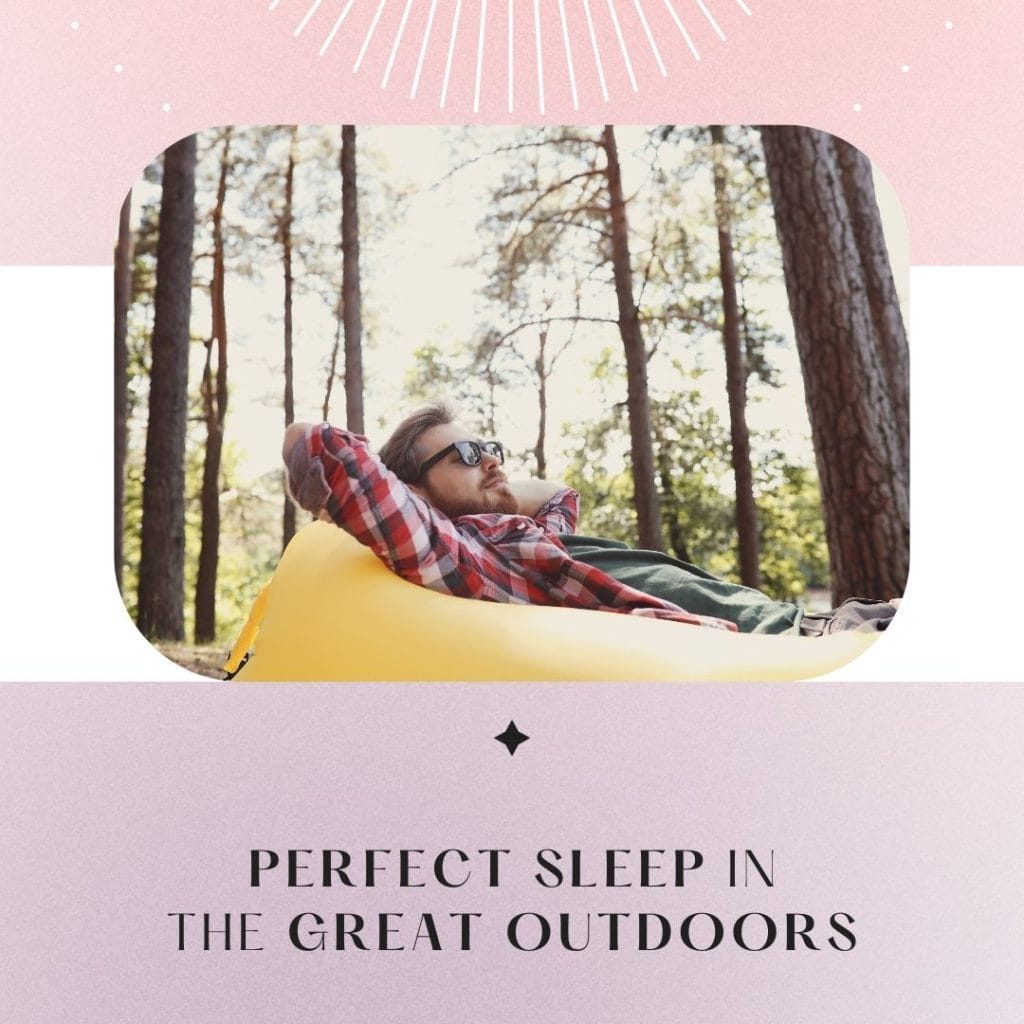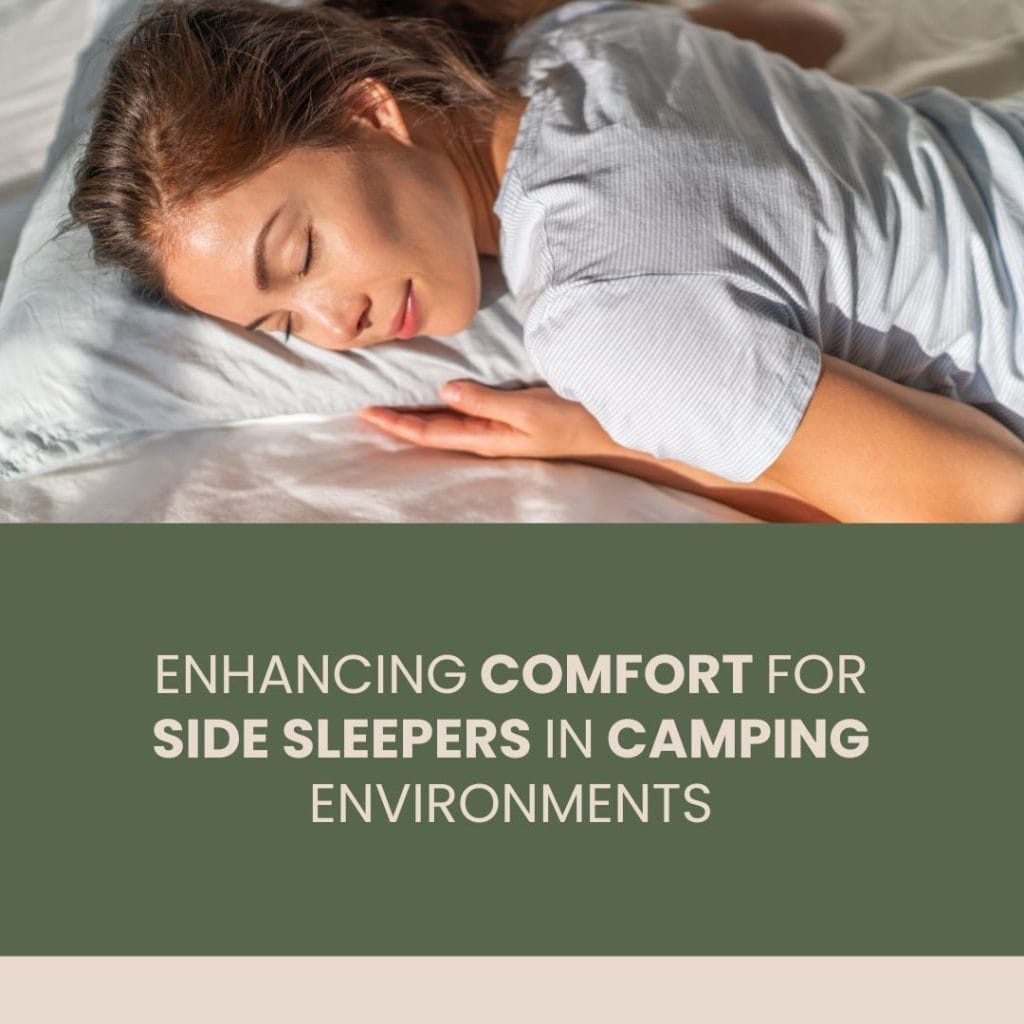Comfortable sleeping outdoors is an art that transforms an ordinary camping trip into an extraordinary adventure. It hinges on several factors, from selecting the right gear to picking the ideal campsite. In this guide, we’ll share tips to ensure you achieve maximum comfort while sleeping outdoors, enhancing your overall outdoor experience.
Tips for Achieving Maximum Comfort While Sleeping Outdoors
Experiencing the great outdoors under a star-lit sky can be an exhilarating experience, but getting a good night’s sleep can be challenging. Ensuring you’re comfortable when sleeping outdoors is critical to fully enjoy your adventure and recover from the day’s activities. This guide provides a handful of practical tips to help you achieve maximum comfort while sleeping outdoors, from selecting the right camping equipment to choosing the perfect camping spot. Embrace the wilderness without sacrificing a good night’s sleep!
1—Overcoming Fears
It’s normal to feel apprehensive about sleeping outdoors, especially if it’s your first time. Common fears include wildlife encounters, safety concerns, and the unfamiliarity of sleeping in a different environment.
The key to overcoming these fears lies in preparation and knowledge. Research about the camping location can give you an idea of the wildlife in the area and the necessary precautions to take. Most wildlife are more scared of you than you are of them, and incidents are rare when campers respect their space and follow safety guidelines.
In terms of safety, it’s recommended to camp in designated areas and not to stray too far from popular trails. These locations are regularly patrolled by park rangers and are generally safer. Furthermore, always inform someone of your camping plans and expected return date as an additional safety measure.
Lastly, practice makes perfect. The more you camp, the more familiar you’ll become with the sounds and sensations of the outdoors at night. A trial run in your backyard or a local campsite can be a good start.
Remember, the aim of comfortable sleeping outdoors is not just about physical comfort, but also about peace of mind. Overcoming your fears is the first step towards achieving this.
2—Cultivate a Relationship with the Animals, Plants, Earth, Weather
Developing a respectful relationship with nature is an integral part of comfortable sleeping outdoors. Recognizing animals as co-inhabitants of the environment can dispel the fear of encounters. Familiarize yourself with the local fauna and understand their behaviors. Similarly, understand the flora in your vicinity. Certain plants can offer practical benefits such as natural mosquito repellents, while others can be harmful if touched or consumed.
Tune into the rhythm of the earth and weather. Observing the lay of the land can offer insights into the best sleeping spots, while understanding weather patterns can prepare you for sudden changes. Such awareness not only enhances safety but also increases comfort during your outdoor slumber.
3) Learn and practice sleeping with a minimalist environment at home.
Learning and practicing minimalist sleeping in a controlled environment like your home can significantly improve your comfort level when sleeping outdoors.
By reducing your bedroom to the bare essentials— a comfortable mattress or sleeping pad, a good-quality sleeping bag, and a pillow— you simulate the conditions you’ll be encountering in the outdoors. Start by decluttering your bedroom environment. Remove any non-essentials and only retain items that contribute to a good night’s sleep.
Start practicing sleeping with less. Forgoing the extra pillows or the plush duvet can be a good start. Try sleeping on a thinner mattress or a sleeping pad. This will condition your body to be comfortable with less, and it will help you adapt more quickly to the minimalist sleeping conditions in the outdoors.
Also, ensure your room is dark and quiet, as these conditions will likely mirror your outdoor sleeping environment. You can use earplugs or a sleep mask if needed.
Over time, these practices will help you enjoy a more comfortable sleeping experience outdoors. They will train your body and mind to find comfort in simplicity, preparing you for the minimalist sleeping conditions you’ll encounter when camping or backpacking.
4) Learn constructive primal movement.
Primal movement refers to the fundamental movements inherent in humans, derived from our evolutionary past. These movements include crawling, walking, running, jumping, climbing, and balancing. Learning these movements and incorporating them into your daily routine can significantly enhance your mobility, flexibility, and strength, all of which are crucial for comfortable sleeping outdoors.
Incorporating primal movements in your exercise regimen preps your body for the physical demands of outdoor sleeping. Crawling exercises, for instance, improve upper body strength and stability, useful when setting up tents or carrying backpacks. Balancing exercises can improve stability on uneven terrain. Movements like squatting can build strength and flexibility, aiding in tasks like gathering firewood or cooking.
Moreover, primal movements can also help reduce the physical discomfort associated with sleeping outdoors. Regular practice can enhance your body’s resilience, helping you adapt to the hard and uneven surfaces you might encounter while camping. In essence, primal movement is about training your body to move as nature intended, thereby enhancing your comfort in natural environments.
5) Use Well Ventilated Tent or Tarp and Wool for Clothing and Bedding
The type of shelter you choose can greatly affect your comfort while sleeping outdoors. A well-ventilated tent or tarp can provide protection from elements while maintaining good airflow, reducing condensation and ensuring a dry, comfortable environment inside. Tents with mesh panels are excellent for this purpose, as they allow for better ventilation while keeping bugs at bay.
On the other hand, your choice of clothing and bedding can also enhance your comfort. Wool, a natural insulator, is an excellent choice for both. When used in clothing, wool provides warmth even when wet, wicks away moisture, and is naturally resistant to odors. As bedding, wool blankets or sleeping bags offer superior warmth and breathability compared to synthetic materials. They can absorb a significant amount of moisture, ensuring you stay dry and cozy throughout the night. Therefore, using a well-ventilated tent or tarp and opting for wool for your clothing and bedding can significantly improve your experience of comfortable sleeping outdoors.
6) The best camping food is pemmican.
Pemmican is a traditional, highly nutritious food that is perfect for camping due to its unique combination of portability, long shelf-life, and high energy content. Originating from Native American cuisine, pemmican is made by grinding dried lean meat (often bison, deer, or elk), combining it with rendered fat, and occasionally mixing in dried berries for additional flavor and nutrients.
The resulting food is incredibly dense in calories and can be stored for extended periods without refrigeration— a significant advantage when camping in remote locations. Pemmican is easy to carry, does not spoil, and provides a quick, high-energy meal when you need it most.
Furthermore, it is simple to prepare at home using just a few ingredients, allowing you to customize the recipe to your personal taste preferences. This makes pemmican not just a practical choice for camping food, but also a delicious one. Therefore, for comfortable sleeping outdoors, having pemmican in your food pack can serve as a reliable and nourishing source of sustenance.
7) Cold adapting
If you reside near a chilly mountain stream, begin to immerse yourself in the stream for progressively extended durations. For city dwellers, a bathtub filled with frozen plastic jugs of ice can be an effective substitute, or alternatively, you could use an outdoor tub in your backyard. Another approach is to lower your indoor heating during winter, and spend some time outdoors each day being exposed to the cold air. This process introduces your body to the cold conditions gradually, thereby preparing it to understand and adapt to the winter season.
8) Cover the eyes and ears:
Covering your eyes and ears is an essential step in ensuring a comfortable and undisrupted sleep outdoors. This practice helps in creating a simulated night environment, even during the day, and shields you from any potential noise disturbances.
Eye masks are particularly effective in blocking out unwanted light, aiding in the production of melatonin, the sleep hormone, and ensuring a deep, restful sleep. They are lightweight, easy to pack, and can be particularly helpful if you’re camping in areas where the sun rises early or doesn’t fully set.
On the other hand, earplugs can significantly reduce noise levels, whether it’s the rustling of leaves, the chirping of birds, or the sounds of fellow campers. Quality earplugs can lower noise levels by 15 to 30 decibels, ensuring that your sleep isn’t disrupted by unexpected sounds.
9) Inclined Bed Therapy
Inclined Bed Therapy (IBT) is a simple yet effective technique that involves elevating the head of your bed by a few degrees to improve health and comfort while sleeping. This simple adjustment can promote better circulation, aid digestion, and improve the quality of your sleep, which are all beneficial for comfortable outdoor sleeping.
The premise behind IBT is the influence of gravity on bodily fluids. By sleeping at an angle, you assist your body’s circulatory system in moving fluids more efficiently. This can help reduce swelling, improve detoxification, and enhance the immune response.
While camping, you can replicate this technique by finding a natural incline or using additional padding under your sleeping bag at the head end. The goal is to create a subtle incline, which could make all the difference for a restful sleep outdoors. Incorporating Inclined Bed Therapy into your camping routine can significantly elevate the comfort of your outdoor sleep experience.
10) Choose the right campsite
Choosing the right campsite can dramatically enhance your comfort while sleeping outdoors.
Firstly, location is key. You should opt for a site that is flat and free of rocks or roots which could cause discomfort. The ground should be relatively dry, and you should avoid low-lying areas that might collect water if it rains.
Secondly, consider the direction of the wind and position your tent accordingly to avoid drafts. A site with some natural windbreaks like trees or bushes can also provide a level of protection from the elements.
Lastly, consider safety and privacy. Your campsite should be a safe distance from fire pits, cliffs, and bodies of water. It’s also recommended to camp out of sight and sound of roads or trails for added tranquility.
Choose wisely, and your campsite can contribute substantially to comfortable sleeping outdoors.
Conclusion
In conclusion, comfortable sleeping outdoors is achievable by incorporating these strategic tips. From choosing the right woolen gear to nourishing yourself with pemmican, cold adapting, and utilizing Inclined Bed Therapy, you can maximize your comfort while outdoors. The final step is selecting a suitable campsite, considering safety, privacy, and terrain. By adhering to these methods, you can truly enjoy the serenity of nature, and transform your outdoor sleeping experience into a comfortable retreat.






